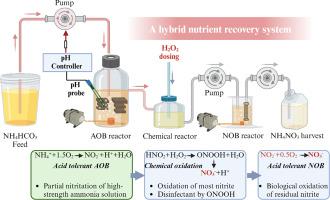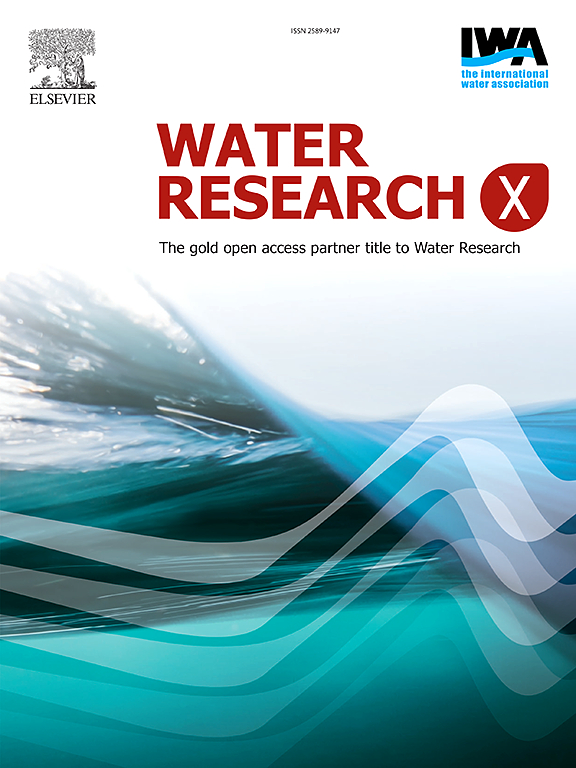A hybrid oxidation approach for converting high-strength urine ammonia into ammonium nitrate
IF 7.2
2区 环境科学与生态学
Q1 ENGINEERING, ENVIRONMENTAL
引用次数: 0
Abstract
Nutrient resources contained in human urine have great potential to alleviate global agricultural fertilizer demand. Microbial nitrification is a recognized strategy for stabilizing urine ammonia into ammonium nitrate, a common fertilizer worldwide, but faces a core bottleneck of process instability due to microbial inhibition. This study reports a new approach by developing a hybrid oxidation process involving three stages—microbial ammonia oxidation, chemical nitrite oxidation and microbial nitrite oxidation. Candidatus Nitrosoglobus, a γ-proteobacterial ammonia oxidizer highly tolerant to free nitrous acid, was introduced in the first stage to oxidize half of the total ammonia in the influent (8 g NH4+-N/L) to nitrite. The nitrite was then chemically oxidized by using hydrogen peroxide via a rapid chemical reaction to form nitrate. The third stage, microbial nitrite oxidation, was employed to ensure the complete removal of residual nitrite following chemical oxidation. The overall concept demonstrated in this work showcased the robust performance of the hybrid system. Moreover, the system also had a dual advantage in achieving antimicrobial ability in the first and second stages, making treated urine a safe fertilizer.

将高浓度尿氨转化为硝酸铵的混合氧化法
人尿中含有的营养资源在缓解全球农业肥料需求方面具有巨大潜力。微生物硝化是一种公认的将尿液中的氨稳定转化为硝酸铵(一种全球常用的肥料)的策略,但面临着一个核心瓶颈,即微生物抑制导致的工艺不稳定性。本研究报告了一种新方法,即开发一种混合氧化工艺,包括三个阶段--微生物氨氧化、化学亚硝酸盐氧化和微生物亚硝酸盐氧化。在第一阶段,引入了对游离亚硝酸具有高度耐受性的γ-蛋白细菌氨氧化菌 Candidatus Nitrosoglobus,将进水中一半的总氨(8 克 NH4+-N/L)氧化为亚硝酸盐。然后使用过氧化氢通过快速化学反应将亚硝酸盐氧化成硝酸盐。第三阶段是微生物亚硝酸盐氧化,以确保完全去除化学氧化后的残留亚硝酸盐。这项工作中展示的整体概念展示了混合系统的强大性能。此外,该系统还具有双重优势,在第一和第二阶段实现了抗菌能力,使处理后的尿液成为安全的肥料。
本文章由计算机程序翻译,如有差异,请以英文原文为准。
求助全文
约1分钟内获得全文
求助全文
来源期刊

Water Research X
Environmental Science-Water Science and Technology
CiteScore
12.30
自引率
1.30%
发文量
19
期刊介绍:
Water Research X is a sister journal of Water Research, which follows a Gold Open Access model. It focuses on publishing concise, letter-style research papers, visionary perspectives and editorials, as well as mini-reviews on emerging topics. The Journal invites contributions from researchers worldwide on various aspects of the science and technology related to the human impact on the water cycle, water quality, and its global management.
 求助内容:
求助内容: 应助结果提醒方式:
应助结果提醒方式:


